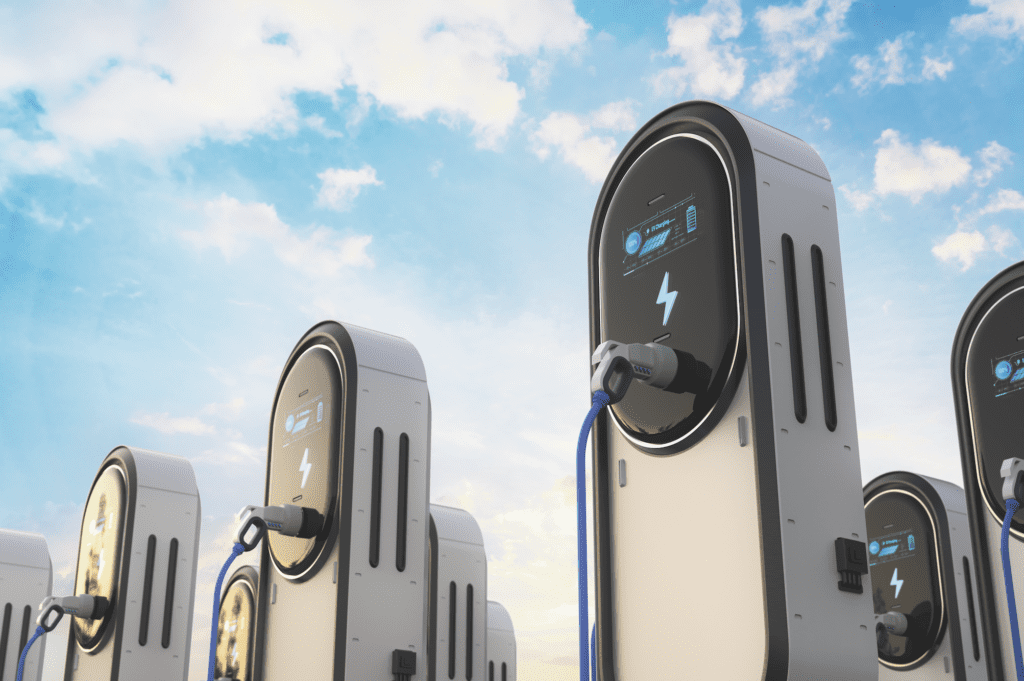Avnet’s sales director lightspeed and transportation, Jason Skoczen, offers insight on charger interoperability and the role of WBG semiconductors in charging efficiency.

Two EV charging challenges include standardization to ensure interoperability, and component supply chain disruption, particularly wide bandgap (WBG) power semiconductors.
Regarding interoperability, Tesla is opening its ecosystem to other manufacturers to make life easier for drivers, while other industry partnerships are increasing. Traditional energy companies, such as BP and Shell, are teaming
up with specialized EV charger manufacturers. Such collaborations bring together experts from fields including power, communications and payment systems.
Competing for market share, BP has announced plans to buy up to $100 million of ultra-fast, 350kW EV chargers from Tesla. These will use Tesla’s Magic Dock to enable vehicles from most major vehicle manufacturers to use the chargers via the Tesla app. Meanwhile, Shell ‘intends to own over 70,0000 EV charge points worldwide by 2025 and 200,000 by 2030’ and has partnered with other
EV charging companies, including ChargePoint, EV Connect and FLO to deliver interoperability through app roaming. The US Department of Transportation set out standards for federally funded EV chargers in February 2023, which will encourage greater uniformity in charger design. The home charger segment, which in terms of units
sold is expected to be at least an order of magnitude larger than public charging installations, emphasizes cost-effectiveness over speed.
Home charging typically happens overnight when energy costs are often lower. Government is playing its part here too. For example, residents without off-street parking in Cambridge, MA, can now apply for Across Sidewalk Electric Vehicle Charging permits to run cables from their homes to their vehicles.
Optimization of EV charging system efficiency is also a hot topic. Achieving fast charging rates is critical for the competitiveness of EV chargers in public areas. DC fast charging must become highly efficient to accelerate EV adoption and reduce drivers’ range anxiety. Ultimately, consumers are looking for a charging experience that takes a little more time than a gasoline refill.
Greater efficiency in onboard EV chargers means greater vehicle range for a given charge. This not only makes vehicles more attractive to consumers but can underpin a vehicle retail price premium of around $150 per extra mile of range, according to a source close to the industry.
Wide bandgap semiconductors are used in EV power systems because they deliver energy with higher efficiency in power conversion circuits. To the EV driver, this means shorter charging times and extended driving range.
Some experts have claimed that moving from silicon to SiC power semiconductors can also deliver system-level cost savings, even if the chips themselves are more expensive. They suggest that such savings are around 15 per cent for vehicle onboard chargers and 10 per cent for DC fast chargers.
WBG semiconductors are mostly based on gallium arsenide (GaN) or silicon carbide (SiC). Both materials are found in EV chargers but SiC parts dominate. This is primarily due to their higher voltage capability and temperature tolerance up to 200°C. The latter simplifies cooling requirements in power conversion circuits, reducing the costs, complexity and system size.
Analyst, Guidehouse Insights, estimates the EV market for WBG semiconductors will grow to over $37 billion by 2032. Other forecasts are more modest but various analysts put the compound annual growth rate (CAGR) for these devices at between 12 and 35 per cent from now to 2030, with most forecasts at the higher end of that spectrum.
In its latest analysis, Yole Intelligence shows how the automotive market is the dominant consumer of SiC devices, accounting for over 70 per cent of production.
This demand has led to massive investment in WBG chip manufacturing. The US CHIPS and Science Act of 2022 encouraged nearly $50 billion of extra investment in American semiconductor manufacturing, bringing
the total announced since the start of 2021 to around $150 billion. It has also encouraged huge semiconductor investment in Europe and Asia.
Avnet distributes SiC devices from twelve SiC semiconductor manufacturers, ensuring product choice and supply chain security. Where chips are in short supply or on extended lead times, Avnet can often recommend alternative items in stock or available more quickly.
A 2023 news review of Avnet’s WBG chip suppliers revealed the introduction of at least 28 new WBG semiconductor product families, demonstrating that product innovation is accelerating. The announcements relate to GaN/SiC devices and span Schottky barrier diodes, MOSFETs and power semiconductor modules.
2023 also saw $10Bn in declared investment plans by Avnet suppliers for WBG chip making, and several big collaboration deals. Some companies did not reveal the value of all their major investments for commercial reasons. However, one said a silicon carbide wafer fabrication plant under development in Asia will start production in 2024
and be capable of producing 10,000 8in SiC wafers per week by 2028. That’s a massive 35 times the volume of SiC wafers the company could deliver in 2021.

